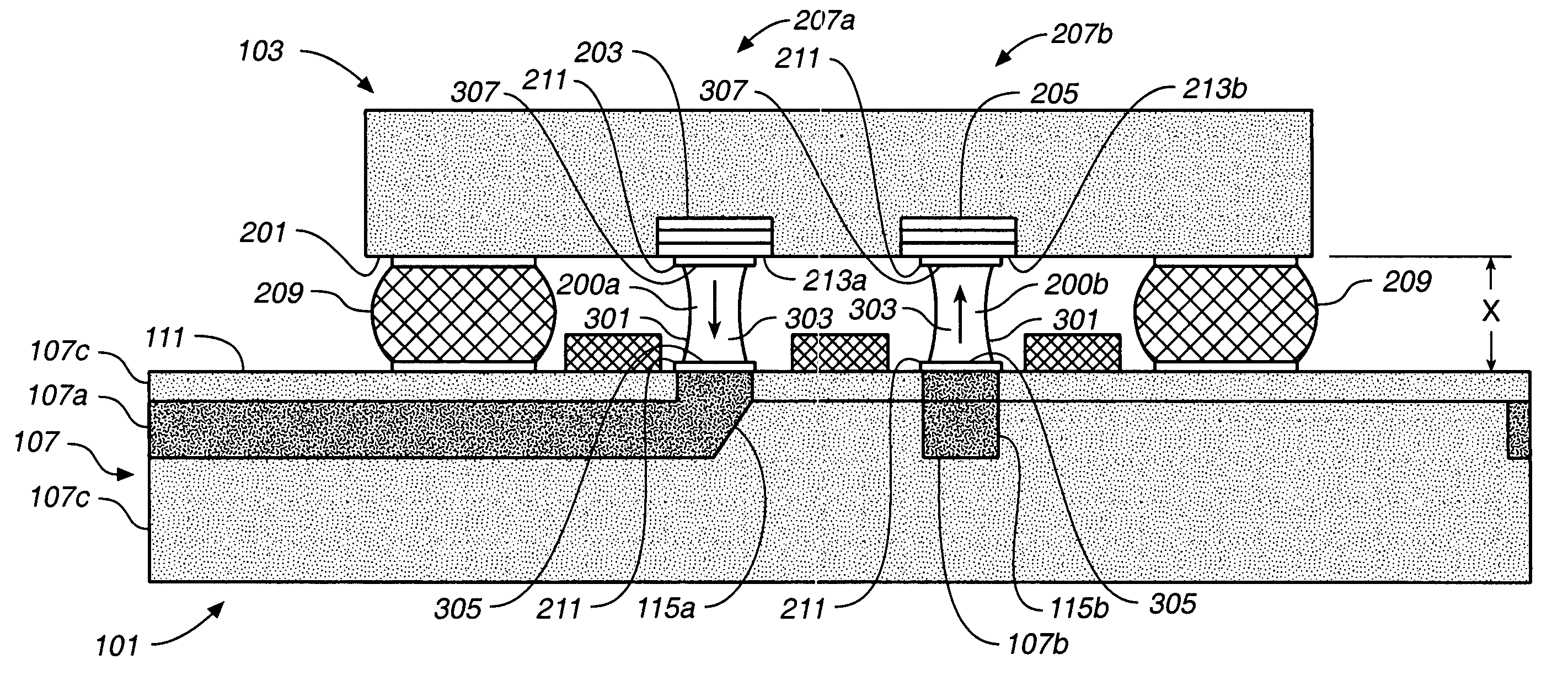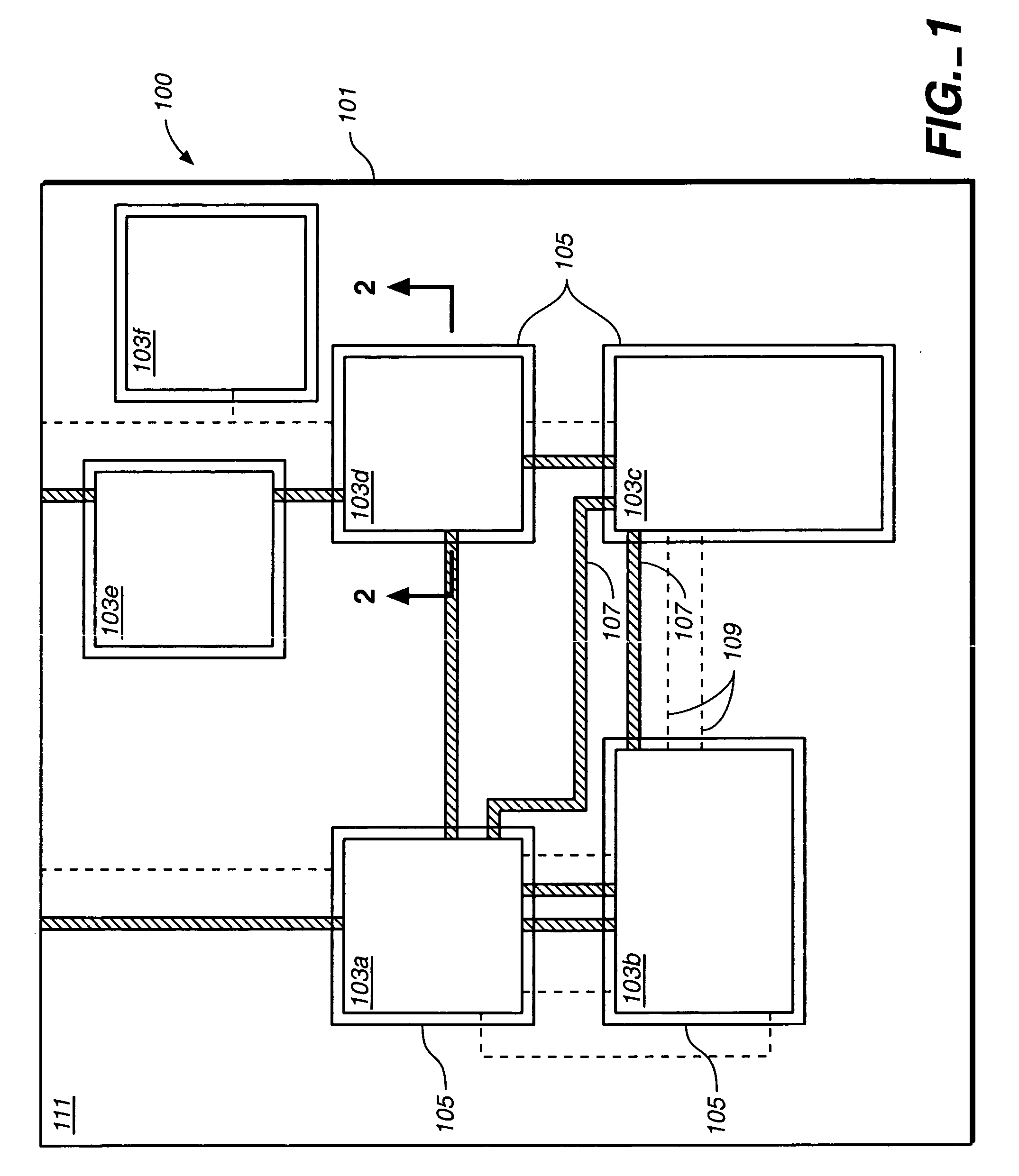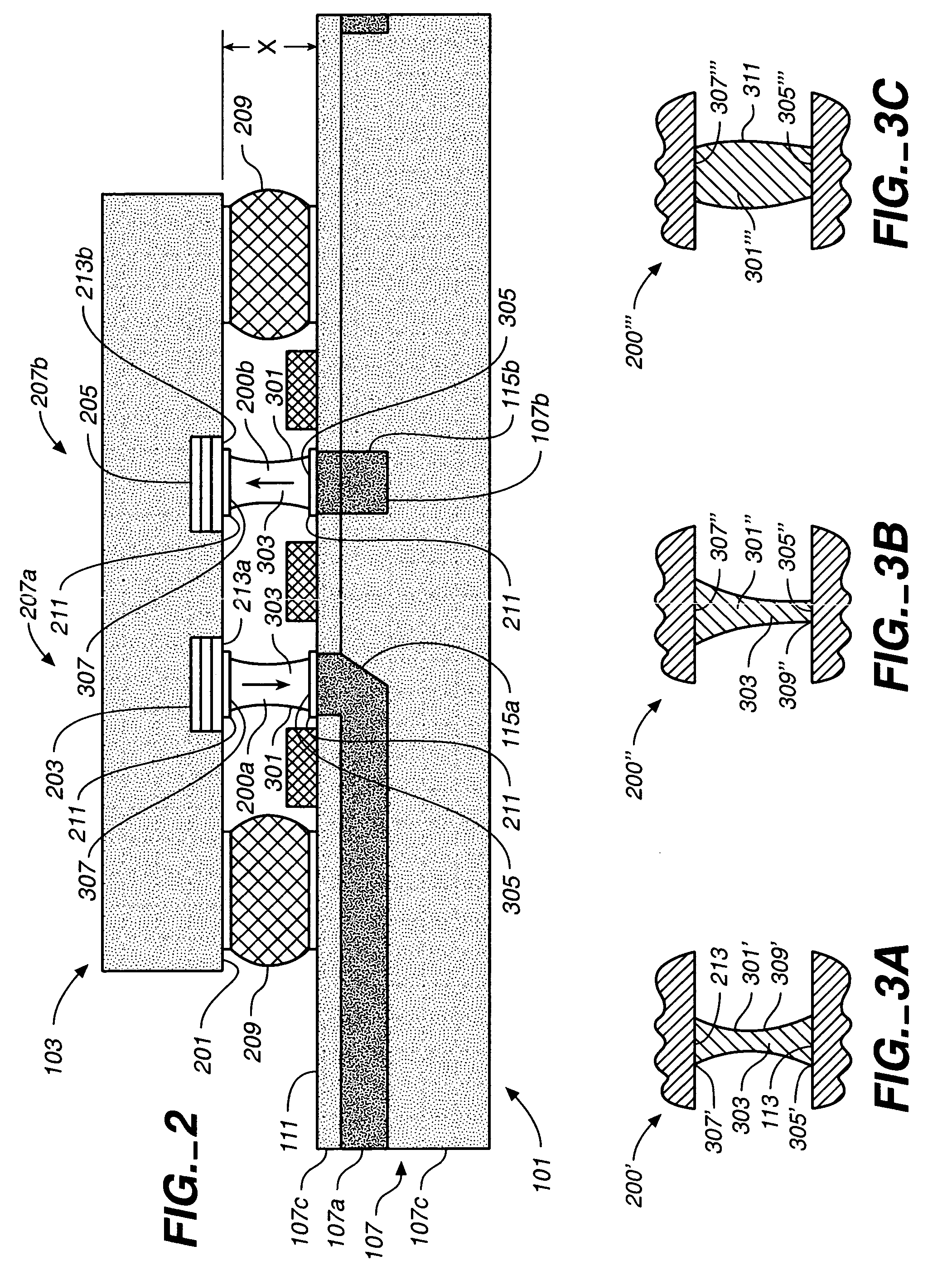Optical bridge for chip-to-board interconnection and methods of fabrication
a technology of optical bridge and chip-to-board interconnection, applied in the direction of optical elements, instruments, semiconductor lasers, etc., can solve the problems of system prone to losses, expensive or difficult to produce or use, and loss in alignment or transmission of optical beams
- Summary
- Abstract
- Description
- Claims
- Application Information
AI Technical Summary
Benefits of technology
Problems solved by technology
Method used
Image
Examples
Embodiment Construction
[0027] The present invention is directed to devices and methods for providing a waveguide to permit optical communications between optical components, for example between light emitting or light receiving elements and a waveguide of an optical circuit board. In particular, the invention is an “optical bridge” formed of a material positioned between the optical components and arranged to facilitate the exchange of optical signals across the optical bridge as a waveguide. In general, the optical bridges of the present invention include materials, such as optical polymers, which are shaped to facilitate the transmission of optical signals. The optical bridge may either be surrounded by free space, or alternatively may be surrounded by another material, such as an underfill material, that does not interfere with the transmission of light.
[0028] Several examples of optical bridges are presented herein as providing a waveguide between an optical component and an optical circuit board on ...
PUM
 Login to View More
Login to View More Abstract
Description
Claims
Application Information
 Login to View More
Login to View More - R&D
- Intellectual Property
- Life Sciences
- Materials
- Tech Scout
- Unparalleled Data Quality
- Higher Quality Content
- 60% Fewer Hallucinations
Browse by: Latest US Patents, China's latest patents, Technical Efficacy Thesaurus, Application Domain, Technology Topic, Popular Technical Reports.
© 2025 PatSnap. All rights reserved.Legal|Privacy policy|Modern Slavery Act Transparency Statement|Sitemap|About US| Contact US: help@patsnap.com



